Growing your own strawberries in Pennsylvania can be easy with a little planning and persistence. Or, if home gardening isn’t possible, Pennsylvania is full of farms that allow you to pick your own farm-fresh produce. Whichever option you choose, knowing the growing tips and peak timing for strawberry season in Pennsylvania will help make your fresh strawberry dreams come true.
Fortunately, we’ve got you covered! First, we’ll review some simple strawberry-growing best practices, plus peak timing for growing and harvesting. Second, we’ll explore the Pennsylvania regions that produce the most strawberries. And finally, we’ll discover a handful of pick-your-own Pennsylvania farms that you and your family won’t want to miss.
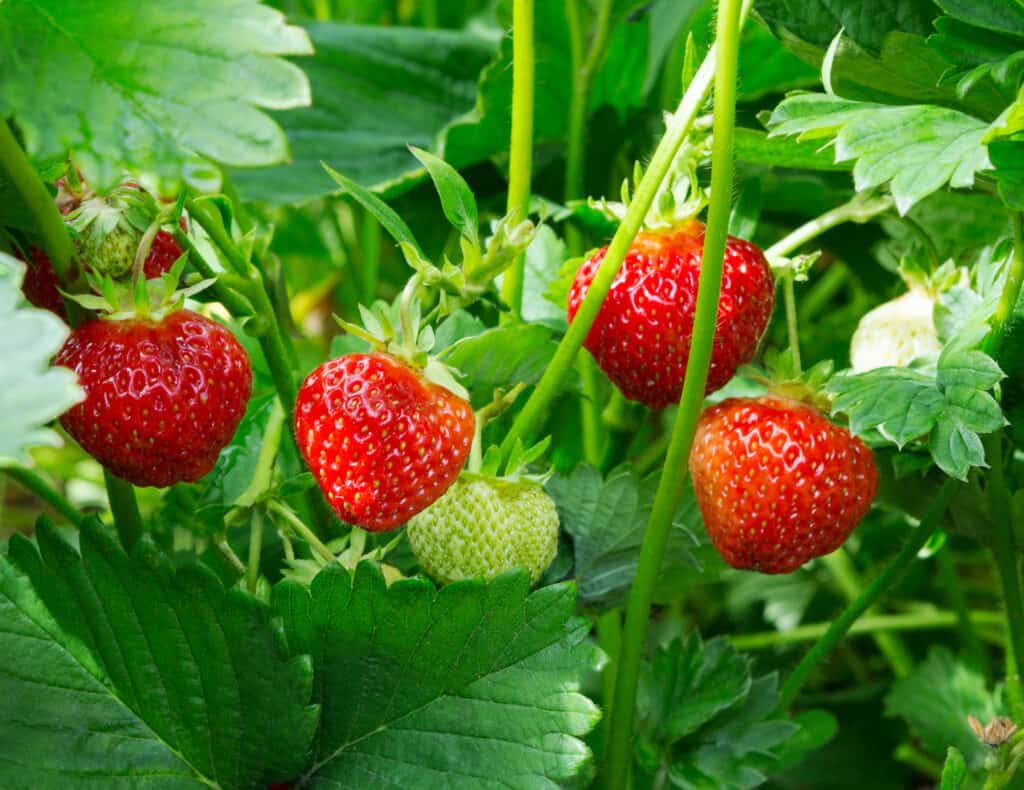
Be careful that you don’t overwater strawberries because they are susceptible to root rot.
©iStock.com/romiri
Strawberry Growing Tips: Best Practices Step by Step
Strawberries are low-growing herbaceous perennial plants with shallow roots. According to PennState Extension, 90% of a strawberry plant’s roots rest in the top 6 inches of soil. This info is vital to know because it means strawberries are ultra-sensitive to over and underwatering. Keep that in mind as you grow this bright and juicy fruit, plus apply more of the basic planting tips outlined below.
Ready to grow your own strawberries? Let’s dig into some best practices for growing these tasty berries in Pennsylvania.
Choose the Best Strawberry Variety
A successful strawberry season in Pennsylvania begins with selecting the best variety to grow in your region. Here are some easy ways to find out which types grow best near you:
- Contact your local county extension service for strawberry plant advice.
- Ask local strawberry gardeners for their favorites. You can ask via social media groups, at local farmer’s markets, or by visiting pick-your-own farms for their suggestions.
- Experiment with growing different varieties in your home garden.
You will also want to learn about the three main types of strawberries before deciding which ones to plant.
- June-bearing strawberries are the most common strawberry varieties. They typically produce one large yield of strawberries during late spring or early summer. (Peak Harvest: June and July)
- Day-neutral strawberries continuously produce fruit from early summer through the first frost, as long as the temperature stays mild. (Peak Harvest: July-October)
- Everbearing strawberries produce fruit 2-3 times during the growing season. The first berries usually appear in late spring/early summer and produce fruit again in late summer/early fall. (Peak Harvest: 2-3 yields between June and October)
Ideal Growing Areas
Strawberries love sunlight, so choose a sunny spot for strawberry plants in your garden or containers. Ensure the plants receive at least 6-8 hours of direct sunlight daily.
Prepare the Soil
Strawberries prefer sandy loam and well-draining soil with a pH between 5.5 to 6.5. You can test your soil pH with testers from gardening centers or online shops.
Balancing Soil pH: If needed, amend the soil to raise or lower the pH level. For example, you could add pine needles or wood chips as mulch around your plants to lower the soil pH. To raise the pH level for more alkaline soil, you could add deionized sulfur. Check with your local gardening center for bags of deionized sulfur and usage instructions.
Improving soil fertility goes a long way in producing the best produce, including strawberries. Ideal soil fertility is achieved when the soil has the best mix of nutrients to sustain plant life.
You can also improve soil fertility by adding fertilizer, which we discuss more in the fertilizer section below.
Planting Tips
To grow strawberries from young plants, set them in the ground with their crowns at the soil level. Leave about 18-20 inches of space between each plant and 4-5 feet between each row. This spacing will allow for proper air circulation and give these low-growing plants room to spread.
Watering and Mulching
Mulch: Apply a layer of mulch around the plants to retain soil moisture and suppress weed growth.
Water: Keep your strawberry plants moist but not soggy, especially during the fruiting season. Give them about an inch of water per week to establish the plants. During peak season, strawberries may need 1-2 inches of water daily if you live in a dry climate. However, Pennsylvania tends toward a humid climate, so extra watering may be unnecessary.
Also, morning watering brings better results than watering later in the day. Morning watering helps with better drainage to prevent root rot.
And note that if you regularly overwater your strawberries, you risk producing bland-tasting fruit. You can spot an overwatered strawberry plant by its yellowing leaves, wilting foliage, and rotting roots.
When to Fertilize Strawberry Plants
There’s some debate about how often to fertilize strawberry plants, so you may need to experiment to see what works best for you.
- First, you can fertilize the plants right after planting or every spring. However, according to MSU Extension, fertilizing strawberry plants in the spring risks producing yields of very soft berries and overgrowth that may lead to more plant disease.
- Second, fertilize in the fall after the last strawberry harvest.
Use a balanced fertilizer (like 10-10-10) to help establish healthy plant roots and encourage optimal fruiting.
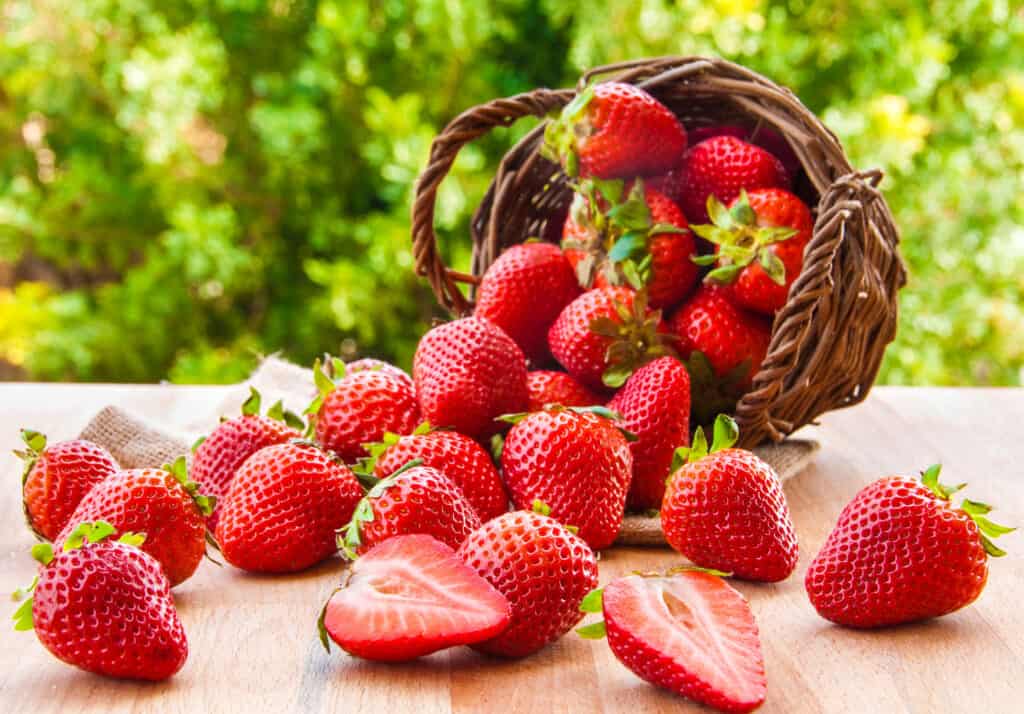
Strawberry season in Pennsylvania is between June and the first frost, depending on the variety.
©iStock.com/MariaUspenskaya
Peak Timing for Growing and Harvesting Strawberries in Pennsylvania
Strawberry season in Pennsylvania usually refers to when the fruit is ripe and ready to pick. However, it’s essential that Pennsylvania gardeners also know the peak timing for planting strawberries.
Peak Planting: The peaking timing for strawberry planting in Pennsylvania is early spring. PennState Extension suggests April is the best month to get your plants in the ground. This timing allows the plants to establish robust root systems before they begin to produce fruit.
Peak Harvest: As for harvesting strawberries in Pennsylvania, the peak season depends on the type of strawberries you grow.
- June-bearing strawberries have peak fruit production in June and July.
- Everbearing strawberries produce fruit 2-3 times between June and October, including at least once early in the season and once late in the season.
- Day-neutral strawberries will produce fruit continuously between July and the first frost.
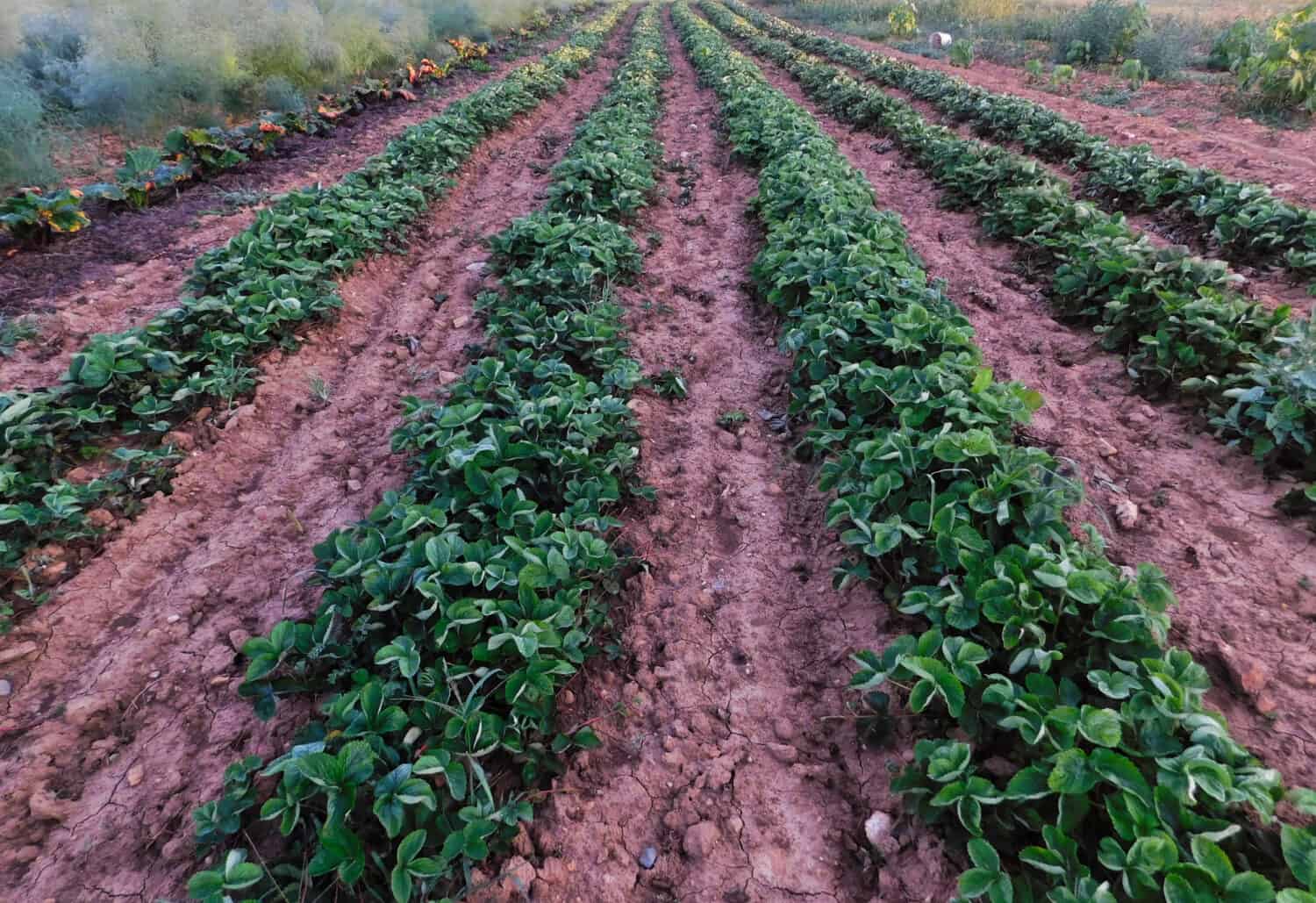
Lancaster County in Pennsylvania has many strawberry farms.
©Meredith Heil/Shutterstock.com
Pennsylvania Regions that Grow the Most Strawberries
Some regions in Pennsylvania have more strawberry farms than others due to the ideal growing conditions. See below for some of the areas with the highest annual strawberry yields in the Keystone State.
Pennsylvania Dutch Region: The south-central Pennsylvania Dutch region is famous for its rich farmland. Strawberry production in counties like Berks and Lancaster is usually high due to the ideal climate and fertile soil. And that’s the case in the following regions, too.
Lehigh Valley: Counties in the Lehigh Valley in the southeastern part of the state are also high producers of strawberries. Chester and Buck counties are two notable areas where you can find farms dedicated to strawberry crops.
Northeast Mountains: There are also plenty of strawberry-producing farms in Lackawanna County, Wyoming County, and more areas of the Northeast Mountains region of Pennsylvania.
Though the above regions produce a high volume of strawberries, there are strawberry farms across the entire state. And many of them invite visitors to pick their own berries during peak season.
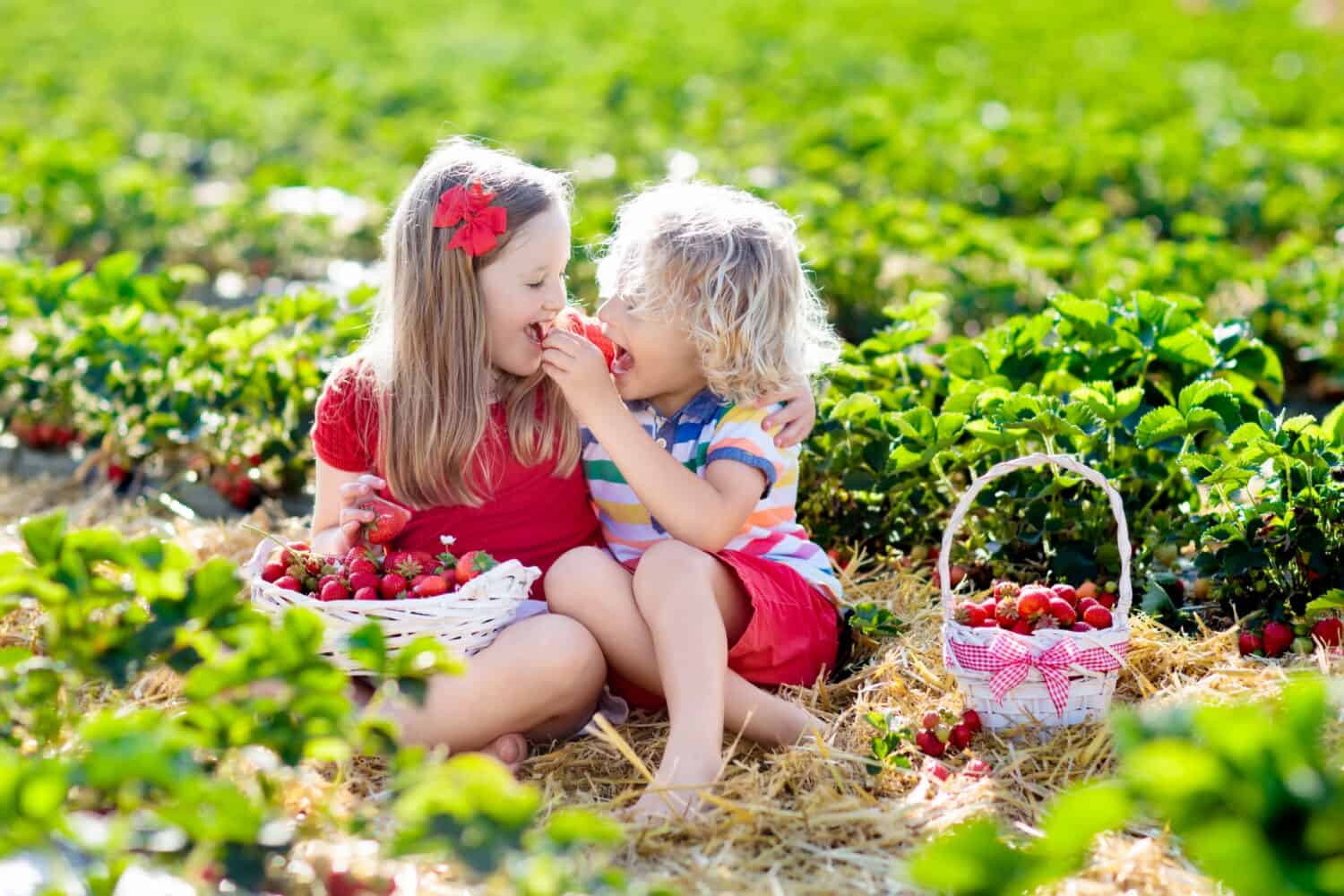
Children who pick their own fruits and veggies are more likely to eat them.
©FamVeld/Shutterstock.com
Where to Pick-Your-Own Pennsylvania Strawberries
U-Pick or Pick-Your-Own farms allow people to bring a container into the fields or orchards and harvest their own produce. Picking your strawberries can be a fun and rewarding experience, especially when kids are included. Studies show that children who pick their own produce are more likely to eat it.
So where do you find the best U-Pick farms in Pennsylvania? You can start right here with our brief list of some of the best:
Pennsylvania Dutch Region:
- Shenks Strawberry Farm (Lancaster County) in Lititz, PA
- Barefoot Farm (York County) in Dover, PA
Lehigh Valley Region:
- Hausman Fruit Farm (Lehigh County) in Coopersburg, PA
- Linvilla Orchards (Delaware County) in Media, PA
Northeast Mountains Region:
- B&R Farms (Schuylkill County) in Ringtown, PA
- LaCoe’s Berry Nice Farm (Lackawanna County) in Clarks Summit, PA
We encourage you to look for more pick-your-own strawberry farms across Pennsylvania and enjoy the juicy bounty while supporting local farms.
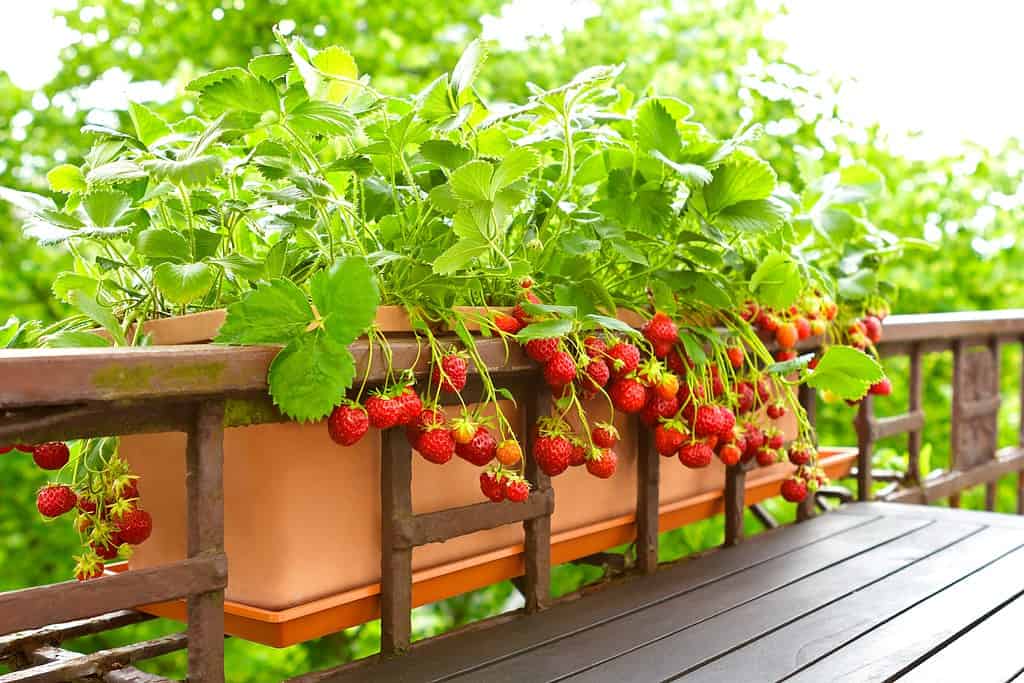
Choose sunny areas to grow strawberries in garden beds and containers.
©Agenturfotografin/Shutterstock.com
Strawberry season in Pennsylvania is “berry” fruitful!
Berry lovers across the state look forward to strawberry season in Pennsylvania every year. Whether growing your own or visiting your favorite U-pick farms during peak harvest, the strawberries in Pennsylvania are some of the best in the country. Knowing the basic growing tips and peak timing of successful strawberry yields is a great place to start. We wish you many fruitful strawberry fields to pick from, even if they belong to someone else!
The photo featured at the top of this post is © FamVeld/Shutterstock.com
Thank you for reading! Have some feedback for us? Contact the AZ Animals editorial team.







